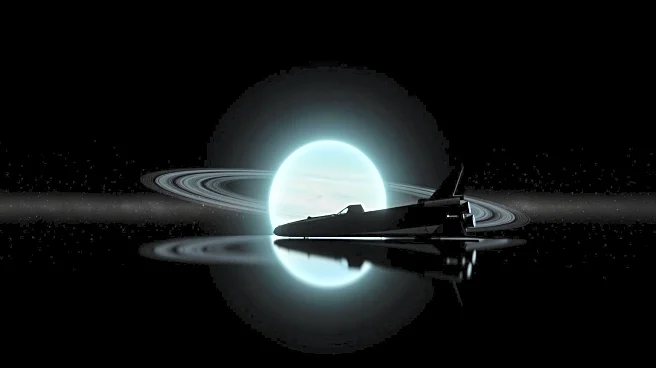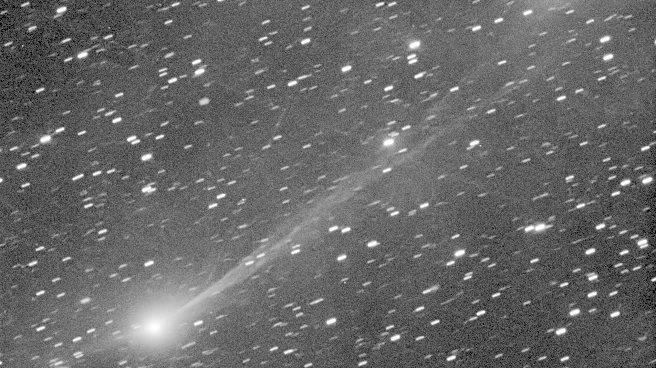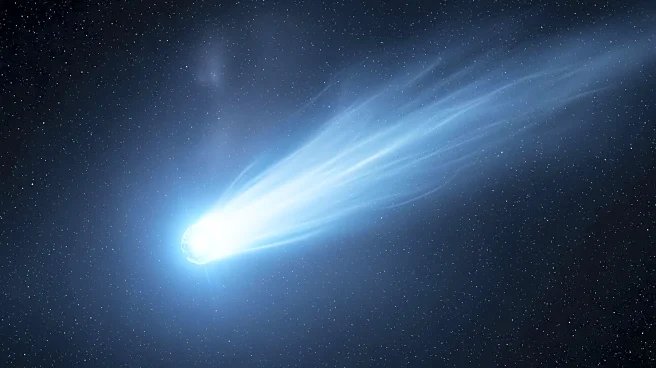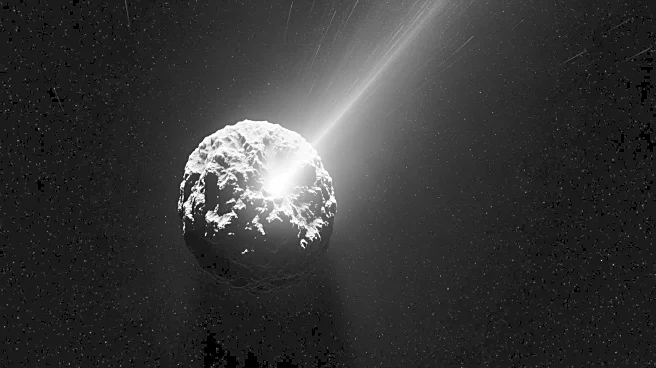What's Happening?
NASA's Europa Clipper spacecraft successfully captured an image of the planet Uranus while conducting an experiment with its star-tracking cameras. These cameras, known as stellar reference units, are crucial for maintaining the spacecraft's orientation
in space. The image, taken on November 5, 2025, shows Uranus as a larger dot near the left side of the frame, amidst a starfield. The Europa Clipper is currently on its journey to the Jupiter system, where it will study the icy moon Europa. The spacecraft, which launched in October 2024, is expected to arrive at its destination in 2030. The mission aims to conduct approximately 50 flybys of Europa to investigate the moon's potential to support life. Key objectives include analyzing the thickness of Europa's icy shell, its interaction with the ocean beneath, and its geological composition.
Why It's Important?
The Europa Clipper mission is significant for its potential contributions to astrobiology and the search for life beyond Earth. By studying Europa, scientists hope to gain insights into the moon's ability to harbor life, particularly in its subsurface ocean. The mission's findings could expand our understanding of habitable environments in the solar system, influencing future exploration and research priorities. Additionally, the successful use of star-tracking cameras for spacecraft orientation demonstrates technological advancements that enhance mission capabilities and reliability. This progress is crucial for long-duration space missions, which require precise navigation and control.
What's Next?
As the Europa Clipper continues its journey to the Jupiter system, further experiments and calibrations will be conducted to ensure the spacecraft's instruments are ready for the mission's scientific objectives. Upon arrival in 2030, the spacecraft will begin its series of flybys, collecting data to fulfill its mission goals. The findings from these flybys will be analyzed to assess Europa's potential habitability, which could inform future missions to explore other icy moons and planets. The mission's success could also pave the way for more ambitious projects aimed at discovering life beyond Earth.















